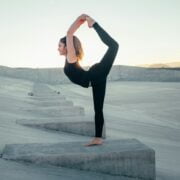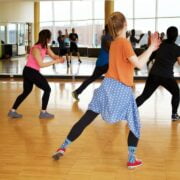
Get Strong and Sculpted Arms with These Effective Bicep Exercises
Strong arms are not only aesthetically pleasing, but they also play a crucial role in our daily activities and athletic performance. Whether you’re lifting heavy objects, playing sports, or simply carrying groceries, having strong arms can make these tasks easier and more efficient. In order to achieve strong arms, it is important to incorporate bicep exercises into your workout routine. Bicep exercises specifically target the muscles in the front of your upper arm, helping to build strength and definition. In this article, we will discuss the importance of strong arms and provide a comprehensive guide on how to achieve them through various bicep exercises.
Key Takeaways
- Strong arms are important for daily activities and sports performance.
- Warm-up exercises for biceps can prevent injury and improve performance.
- Standing dumbbell curls target the biceps and can be done with various weights.
- Hammer curls work the biceps and forearms simultaneously.
- Preacher curls isolate the biceps and can be done with a barbell or dumbbells.
- Chin-ups are a challenging exercise that work the biceps and back muscles.
- Cable curls provide constant tension on the biceps and can be done with different attachments.
- Concentration curls target the biceps and can be done with a dumbbell or resistance band.
- Cool-down and stretching exercises for biceps can improve flexibility and reduce soreness.
Why Strong Arms are Important
Having strong arms offers numerous benefits that extend beyond just looking good. Strong arms can greatly improve your daily activities by making tasks such as lifting, carrying, and pushing easier and more efficient. Whether you’re moving furniture or carrying heavy grocery bags, having strong arms can prevent injuries and make these tasks less strenuous.
In addition to improving daily activities, strong arms also play a crucial role in athletic performance. Many sports require upper body strength, such as basketball, tennis, and swimming. Having strong arms can enhance your performance in these sports by allowing you to generate more power and control in your movements. It can also help prevent injuries by providing stability and support to your shoulders and elbows.
Warm-up Exercises for Biceps
Before diving into any exercise routine, it is important to warm up your muscles to prevent injuries and improve performance. Warming up increases blood flow to the muscles, loosens up the joints, and prepares the body for physical activity. When it comes to bicep exercises, there are several warm-up exercises that can be done to specifically target the biceps.
One effective warm-up exercise for the biceps is arm circles. To perform this exercise, stand with your feet shoulder-width apart and extend your arms out to the sides. Begin making small circles with your arms, gradually increasing the size of the circles. After a few seconds, reverse the direction of the circles. This exercise helps to warm up the shoulder joints and activate the biceps.
Another warm-up exercise for the biceps is wrist rotations. Start by standing with your feet shoulder-width apart and extend your arms out in front of you. Make a fist with each hand and rotate your wrists in a circular motion, first clockwise and then counterclockwise. This exercise helps to warm up the wrists and activate the biceps.
Standing Dumbbell Curls
| Standing Dumbbell Curls Metrics | Value |
|---|---|
| Primary Muscles Worked | Biceps Brachii |
| Other Muscles Worked | Brachialis, Brachioradialis |
| Equipment Needed | Dumbbells |
| Difficulty Level | Intermediate |
| Force | Isolation |
| Exercise Type | Strength Training |
| Target Gender | Both |
Standing dumbbell curls are one of the most effective exercises for building bicep strength. To perform this exercise, start by standing with your feet shoulder-width apart and hold a dumbbell in each hand, palms facing forward. Keep your elbows close to your sides and slowly curl the dumbbells up towards your shoulders, contracting your biceps at the top of the movement. Pause for a moment and then slowly lower the dumbbells back down to the starting position.
Standing dumbbell curls target the biceps brachii, which is the main muscle in the front of your upper arm. This exercise also engages other muscles in your arms, such as the brachialis and brachioradialis, which help to stabilize and support the movement. By regularly incorporating standing dumbbell curls into your workout routine, you can build strength and definition in your biceps.
Hammer Curls
Hammer curls are another effective exercise for building overall arm strength. To perform this exercise, start by standing with your feet shoulder-width apart and hold a dumbbell in each hand, palms facing towards your body. Keep your elbows close to your sides and slowly curl the dumbbells up towards your shoulders, maintaining a neutral grip throughout the movement. Pause for a moment and then slowly lower the dumbbells back down to the starting position.
Hammer curls primarily target the brachialis, which is a muscle located underneath the biceps brachii. This exercise also engages the biceps brachii and the brachioradialis, as well as the muscles in your forearms. By incorporating hammer curls into your workout routine, you can build overall arm strength and improve your grip.
Preacher Curls

Preacher curls are a great exercise for building bicep size and definition. To perform this exercise, start by sitting on a preacher curl bench with your feet flat on the floor. Hold a barbell with an underhand grip, hands shoulder-width apart, and rest your upper arms on the angled pad of the bench. Slowly curl the barbell up towards your shoulders, contracting your biceps at the top of the movement. Pause for a moment and then slowly lower the barbell back down to the starting position.
Preacher curls specifically target the biceps brachii and isolate them by eliminating any swinging or momentum. This exercise also engages the brachialis and brachioradialis, as well as the muscles in your forearms. By regularly incorporating preacher curls into your workout routine, you can build size and definition in your biceps.
Chin-ups
Chin-ups are a challenging exercise that targets multiple muscles in your upper body, including the biceps. To perform this exercise, start by gripping an overhead bar with an underhand grip, hands shoulder-width apart. Hang from the bar with your arms fully extended and pull yourself up until your chin is above the bar. Lower yourself back down to the starting position in a controlled manner.
Chin-ups primarily target the latissimus dorsi, which is a large muscle in your back. However, they also engage other muscles in your upper body, including the biceps brachii and brachialis. By incorporating chin-ups into your workout routine, you can build overall upper body strength and develop strong and defined biceps.
Cable Curls
Cable curls are a great exercise for building bicep strength and definition. To perform this exercise, start by standing in front of a cable machine with your feet shoulder-width apart. Attach a straight bar or rope handle to the low pulley and hold it with an underhand grip, hands shoulder-width apart. Keep your elbows close to your sides and slowly curl the bar or handle up towards your shoulders, contracting your biceps at the top of the movement. Pause for a moment and then slowly lower the bar or handle back down to the starting position.
Cable curls target the biceps brachii, as well as the brachialis and brachioradialis. The constant tension provided by the cable machine throughout the movement helps to engage and activate the biceps. By regularly incorporating cable curls into your workout routine, you can build strength and definition in your biceps.
Concentration Curls
Concentration curls are an effective exercise for building bicep size and definition. To perform this exercise, start by sitting on a bench with your legs spread apart and hold a dumbbell in one hand, palm facing up. Rest your elbow on the inside of your thigh, just above the knee, and fully extend your arm towards the floor. Slowly curl the dumbbell up towards your shoulder, contracting your bicep at the top of the movement. Pause for a moment and then slowly lower the dumbbell back down to the starting position.
Concentration curls primarily target the biceps brachii and isolate them by eliminating any swinging or momentum. This exercise also engages the brachialis and brachioradialis, as well as the muscles in your forearms. By regularly incorporating concentration curls into your workout routine, you can build size and definition in your biceps.
Cool-down and Stretching Exercises for Biceps
After completing your bicep workout, it is important to cool down and stretch your muscles to prevent injuries and promote recovery. Cooling down helps to gradually decrease your heart rate and blood pressure, while stretching helps to improve flexibility and reduce muscle soreness.
One effective cool-down exercise for the biceps is tricep stretches. To perform this stretch, stand with your feet shoulder-width apart and extend one arm overhead. Bend your elbow so that your hand is reaching towards the opposite shoulder blade. Use your other hand to gently pull the elbow of the stretched arm towards the opposite side, feeling a stretch in the back of your arm. Hold this stretch for 15-30 seconds and then repeat on the other side.
Another cool-down exercise for the biceps is shoulder stretches. Start by standing with your feet shoulder-width apart and extend one arm across your chest. Use your other arm to gently pull the extended arm towards your body, feeling a stretch in the front of your shoulder. Hold this stretch for 15-30 seconds and then repeat on the other side.
In conclusion, having strong arms offers numerous benefits that extend beyond just looking good. Strong arms can greatly improve your daily activities and enhance your athletic performance. By incorporating bicep exercises into your workout routine, you can build strength and definition in your arms.
We discussed various bicep exercises, including standing dumbbell curls, hammer curls, preacher curls, chin-ups, cable curls, and concentration curls. Each exercise targets different muscles in the arms and offers unique benefits. It is important to warm up before starting any exercise routine and to cool down and stretch afterwards to prevent injuries and promote recovery.
If you are new to exercising or have any underlying health conditions, it is always recommended to consult with a trainer or medical professional before starting any new exercise routine. They can provide guidance and ensure that you are performing the exercises correctly and safely. So, what are you waiting for? Start incorporating these bicep exercises into your workout routine and enjoy the benefits of strong arms!
FAQs
What are bicep exercises?
Bicep exercises are physical activities that target the bicep muscles in the upper arm. These exercises are designed to increase the strength and size of the biceps.
Why are bicep exercises important?
Bicep exercises are important because they help to build arm strength and size. Strong biceps are essential for performing everyday tasks such as lifting and carrying objects.
What are some common bicep exercises?
Some common bicep exercises include bicep curls, hammer curls, preacher curls, and concentration curls. These exercises can be performed using dumbbells, barbells, or resistance bands.
How often should I do bicep exercises?
The frequency of bicep exercises depends on your fitness goals and level of experience. Generally, it is recommended to perform bicep exercises 2-3 times per week with at least one day of rest in between.
What are some tips for performing bicep exercises?
Some tips for performing bicep exercises include using proper form, starting with lighter weights and gradually increasing the weight, and incorporating a variety of exercises to target different areas of the biceps.
Can bicep exercises be done at home?
Yes, bicep exercises can be done at home using dumbbells, resistance bands, or bodyweight exercises such as push-ups and pull-ups. It is important to have proper equipment and space to perform these exercises safely.

















